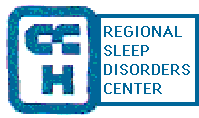--IMPORTANT! There is one
specific condition that is the underlying cause of sleepiness
in many patients who are mistakenly diagnosed as having idiopathic
hypersomnia: and this condition can be easily overlooked
during sleep laboratory testing.
-This condition is extremely treatable:
so it should always be looked for.
-It
is called UPPER AIRWAY RESISTANCE SYNDROME. It refers to patients
who may never stop breathing at night, and who may get every
breath they attempt but at a high price. People with this syndrome
have to work extremely hard to keep air moving through a narrowed
upper airway.
In fact, in some cases, the resulting swings in pressure
inside the chest have even caused collapse of the left side of
the heart!
People
with this have been found to be just as likely to fall asleep
at the wheel as are people with full-blown sleep apnea.
-The
reason that this condition is frequently missed relates to
the way that breathing is traditionally monitored in sleep
laboratories. Many sleep centers lack the equipment to go any
further when indicated to confirm this diagnosis.
Normally, during a conventional sleep recording, one
records air flow at the nose and mouth with a temperature sensor,
and breathing effort is monitored with bands, strain gages or electrodes
on the chest wall and abdomen.
Upper
airway resistance syndrome tends to be missed because first,
air flow at the mouth and nose are not interrupted (since
the person does not actually quit breathing). Second,
it is difficult to see increased effort with the type of
monitoring just described: since those techniques are very
qualitative and not quantitative. They give a rough idea
of the breathing effort present without actually measuring
it.
The
definitive way to diagnose this problem is by monitoring
pressure swings within the chest. This in turn is usually
done by having the patient swallow a small balloon
by which one measures pressure swings. Changes in pressure
in the esophagus reflect changes of pressure within the chest,
since the esophagus passes through the chest. It
is a very simple and safe technique. Unfortunately, most
sleep centers do not offer it at this point in time.
-Some individuals with upper airway resistance
syndrome snore loudly: which can help to suggest this diagnosis.
However, some patients with upper airway resistance syndrome are
not loud snorers at all.
-If upper airway resistance syndrome is
present and accounts for the patient's sleepiness, a rental trial
of positive airway pressure (CPAP or bilevel PAP) can help confirm
such.
Restoration of good alertness
on PAP certainly does not favor either narcolepsy or idiopathic
hypersomnia, since neither of the latter respond to administration
of air under pressure!
--If in fact, upper airway resistance syndrome
is not present and if the diagnosis truly is idiopathic CNS hypersomnia,
the treatment is very similar to that used for the sleepiness
of narcolepsy. Both avoidance of aggravating factors and medications
are needed.
In
summary, the first step:
Ensure
as firm a diagnosis as possible, with careful exclusion
of alternative explanations for sleepiness--particularly
upper airway resistance syndrome (UARS). Ensure that the
sleep center that has evaluated you is capable of doing special
monitoring for detection of UARS.
The
second step:
Institute
the most specific and safest treatment plan possible, utilizing
common sense measures to render treatments optimally effective.

